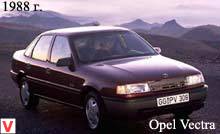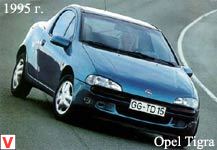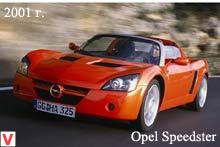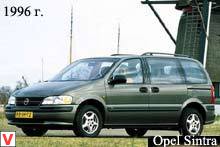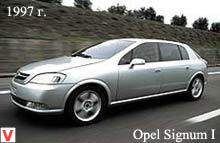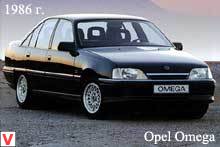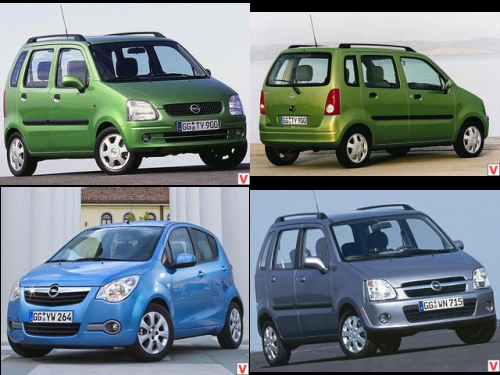
The debut of the Opel Agila mikrovena took place in the spring of 2000 at the Geneva Motor Show. The history of its occurrence was preceded by the joint work of experts Suzuki and Opel. Agila - a relatively small car, allows you to perfectly maneuver and park in a confined space. It features a high body with almost flat side panels and small windows near the rear pillars. Within the city limits Agila maneuverability comes in handy.
Turning radius is only 4.8 m. When parking, high seating position and a large glass area provide very good visibility. The rear double seat is located 100 mm above the front, Opel representatives explain this concern about expanding the horizons of the rear passengers.
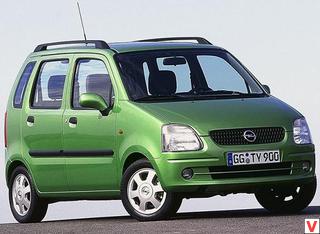
With a length of 3.5 m and a width of 1.62 m, Agila accommodates four people plus luggage, located in the 248-liter trunk. A huge number of different pockets, containers and nets helps to place small things. The interior of the Opel Agila is neat and simple, as befits the interior decoration of a small city car.
The steering wheel, the instrument cluster, the shape of the console, the location of the buttons and switches are clearly borrowed from the Opel Astra. On the corrosion resistance of the body can be judged from the fact that Opel gives a 12-year warranty against rust. The range of engines is represented by two units: a 3-cylinder displacement of 1.0 liters and a power of 58 hp. and 4-cylinder 1.2 liter capacity and 75 hp Opel Agila is available only with a five-speed manual gearbox. The car is economical. The average fuel consumption with a 1.0-liter engine is 6.3 l / 100 km, with a 1.2-liter - 6.5 l / 100 km. Both engines belong to the ECOTEC family. Now about the suspension.
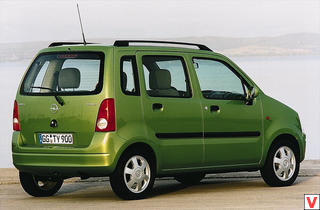
McPherson stands in front with a stabilizer bar, behind - a continuous bridge. Standard equipment includes electric power steering, dual airbags, heated rear window and seat belt pretensioners. For an additional fee set the music system, ABS, electric mirrors, power windows, fog lights and central locking. The car has a good level of security. Stiff bars, installed in the doors and “branded” Opelev safety pedals allowed Agila to get three stars out of 4 possible on the EuroNCAR tests. The original electric power steering, which comes into play when the steering wheel is deflected, not only reduces fuel consumption, but also improves the car’s handling.
Powerful brakes (disc in the front and drum in the rear) with ABS can provide safe braking in difficult conditions. Reduces the risk of injury to the legs of the driver during a frontal impact, special mounting pedals, which can detach them in an accident. In March 2002, Opel introduced a new version of the Agila configuration - the top version of Agila Njoy. This version is easily distinguished by the characteristic two-tone body color, which is specially designed in gold and silver tones. This version is equipped with a model with a 1.2 16V Ecotec engine.
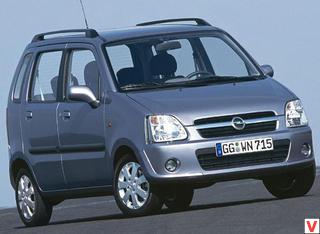
In addition to painting in the appearance of the car, many other original parts were embodied: a new chrome grille, new chrome-plated six-wheel rims, original fog lights, chrome moldings in a circle, an original steering wheel with leather coating and a dashboard decorated with lots of aluminum. Upholstery sustained in the same colors as the body. In 2003, Opel Agila was subjected to face lifting. The car got new bumpers in body color. A color palette of the interior is now made in the tone of the exterior. There are new trim options, including a three-spoke steering wheel, original seat covers and seat belts in the color of the seats.
The ABS system began to be installed on all cars of this series. The power units with which Agila has been completed so far now meet all Euro 4 toxicity standards. Plus, two new Common-Rail diesel engines with a power of 70 hp appeared in the engine range. and 150 hp The first one turned out to be the most economical in the model's power plant range; it consumes only 5.2 liters per 100 kilometers.
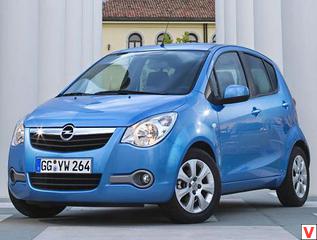
The production program of the model has also changed somewhat. In it, in addition to the famous "Njoy" appeared versions of the "Cosmo" and "Njoy Design-Edition". Differences not only in sets of basic equipment, but also in options for finishing, painting, etc.
Agila second generation was first introduced in 2007 at the Frankfurt Motor Show. Like the previous model, Agila 2008 was created in cooperation with Suzuki. The car is even produced on the same conveyor with the twin brother Suzuki Splash in Hungarian Esztergom. Agila 2008 is not only practical as its predecessor, but also has a much more dynamic design. The car received the typical proportions typical for Opel cars, smooth curves and expressive plastic of sidewalls. The roof line is now dynamically lowered, moving in the form of a smooth curve towards the rear of the body.
This allowed for a reduction in the aerodynamic coefficient of the Agila model to 0.32 against the previous 0.37. The car was 20 cm longer (3.74 m), 6 cm wider (1.68 m), but 7 cm lower than its predecessor (1.59 m). The quality of materials, the new color scheme for the exterior and interior, multifunctional compartments for luggage and small items, a large internal height of the cabin create a feeling of comfort. The main innovations of the interior are a separate round tachometer, a higher-mounted gear lever, as well as radio control using the buttons on the steering wheel (with height adjustment).
The high positioning of the seats makes it easier to fit and exit the car, and also provides excellent visibility. The backs of the rear seats fold in one go (at a ratio of 60:40), forming a flat loading area. An extra compartment for storing small items is found in the baggage underground. In the standard version, the luggage compartment volume is 225 liters, and the maximum amount of luggage reaches more than 1,100 liters. The basic power unit is a 65-strong three-cylinder motor with a volume of one liter, a step above is a 1.2-liter version with an output of 86 hp, which is available for the first time with an automatic gearbox.
The most economical engine for the Agila model is a 1.3-liter turbo diesel engine with 75 hp Common Rail fuel supply system. The Agila version 1.0 uses five liters, and the version of Agila 1.3 CDTI is only 4.5 liters per 100 kilometers. All units are paired with a 5-speed manual.
Agila, with both gasoline and diesel engines, for carbon dioxide emissions with a margin fit into the strict standards of several European countries, which gives the right to tax incentives.

